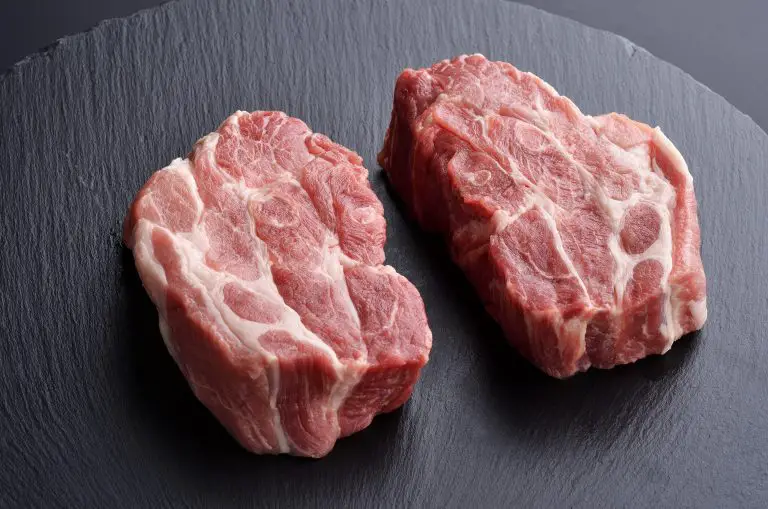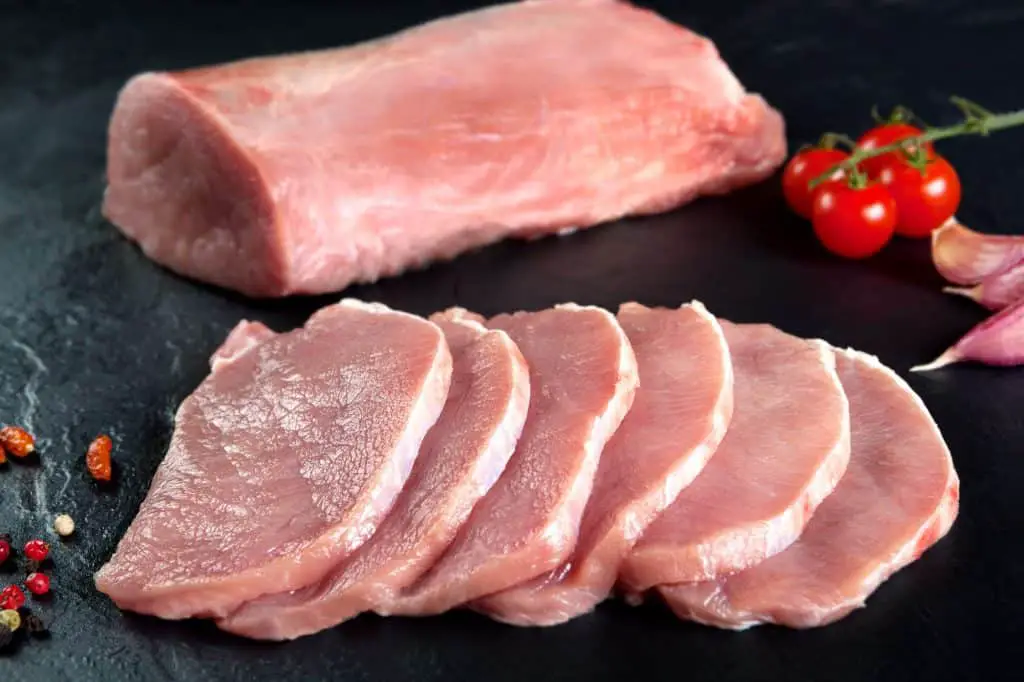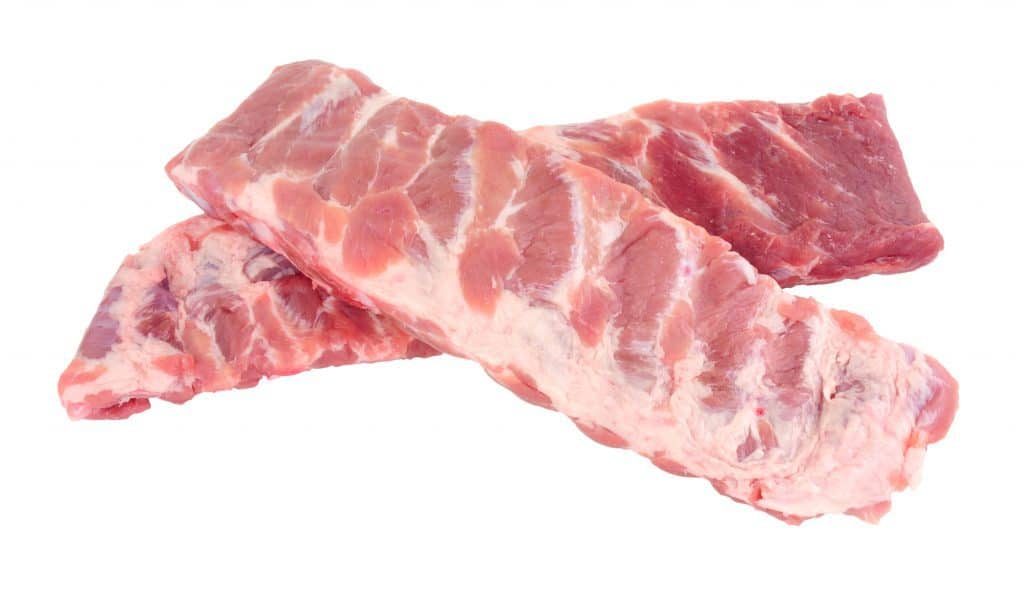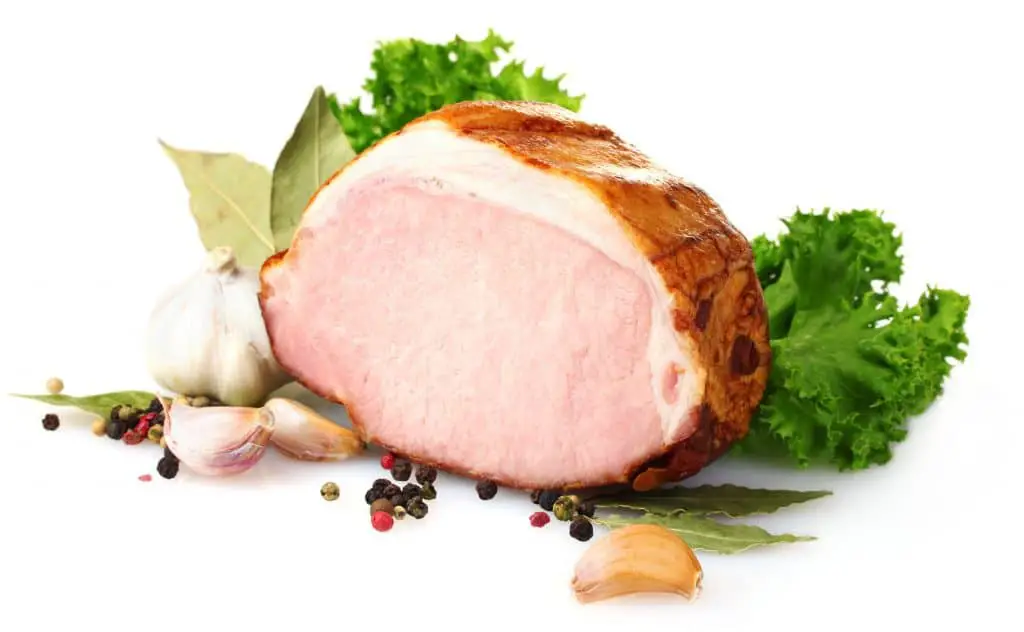Whether it’s for a feast, a family dinner, or just for a flavoursome meal, pork is a definite favourite. Based on the pork cut, it may either be naturally tender and lean, or tough and fatty.
After taking a trip to my local butcher, using my experience grilling and barbecuing pork, and researching the best recipes and resources for each cut, I put together a master guide to break down the primal and sub primal cuts, and the best cooking methods to prepare each of them.
The quality of tenderness or toughness of pork mainly depends on the presence of fat and the way it’s distributed, as well as the thickness of the muscle fibres within the meat.
The areas of the pig which muscles get the most exercise and are strained the most tend to have thicker muscle fibres and tend to have a lot more supporting fat. This makes them a lot tougher, and will require a longer cooking time to break down the proteins, fats, and collagen to make it more tender. Pork butt and pork shoulder are popular, naturally tough cuts of pork.
The areas of the pig that get the least exercise and the muscles are strained the least, tend to have thinner muscle fibres are much more lean. These are cuts like tenderloin, pork ribs, or loin chops. These meats are much more tender if prepared correctly.
Primal Cuts of Pork

Leg (Rear)
The meat between the hips and knee of the rear legs of pig is often referred to as ham. It’s usually retailed fresh or cured as both large ham roasts or as thin slices of ham. The primal leg can be broken down into the popular sub primal cuts of shank, sirloin, or cured ham.
Loin
Loin is the cut from the area from just past the shoulder, to the back legs of the pig. The muscles from this area aren’t heavily strained, and so are much more tender and lean. Primal loin contains the popular sub primal cuts of ribs, loin chops, as well as loin and tenderloin roasts.
If you’re planning to cook pork loin, check out this group cooking guide for preparing pork tenderloin for any number of guests!
Shoulder
Primal shoulder is the cut from above the front legs, or arms, of the pig. The shoulder tends to support a lot of the pig’s body weight during its life and is constantly in use. This leads to thicker muscle fibres, with a good distribution of fat throughout as marbling. The sub primal cuts that come from the shoulder, such as pork shoulder, or pork butt, are commonly served as a roast, in a stew, in braising, or in barbecue.
Cooking these cuts for a longer time period helps break down all the connective tissue turning a tough piece of meat very tender and succulent. When you hear of pulled pork, it’s more than likely coming from one of these cuts.
Side
Side, or belly, refers to the underside of the pig, below the loin and between the leg and shoulder. Although this part of the pig hardly gets any exercise, it’s also where most of the pig’s fat is. Therefore the cuts are quite tender but often come with an abundance of fat such as in pork belly, bacon, and spareribs.
Because of the rich fat content in the belly, excess fat can be rendered down to form lard, or pig fat. Lard can be used in baking, roasting, and other cooking as a way to add a rich creamy flavor to your dishes, often as a substitute for oil, butter, or other fats. For a full breakdown, check out beef fat vs. pork fat.
Cooking pork belly at high temperatures with result in a nice crispy skin. But, if you’re cooking pork belly at a low and slow temperature then the skin will become more rubbery. So, if you are smoking pork belly, it’s best you remove the skin!
Sub Primal Cuts of Pork
Pork Butt or Boston Butt

Pork butt, or commonly referred to as the Boston butt, is the front shoulder of the pig. Although quite inexpensive, it is often revered for its incredibly tasty, succulent, and tender qualities when cooked over longer periods of time. Naturally tough, the muscle fibres are thick and there and there is a lot of connective tissue. Pork butt is also well marbled, meaning it has a good amount of fat streaking through the meat.
Although it’s a gernally large cut, you can cut pork shoulder in half or quarters without losing out on its best qualities.
Cooking Pork Butt
Smoking
Smoking pork butt low and slow gives the connective tissue enough time to effectively break down. Because of the high fat content pork butt doesn’t easily get dry, making it a very forgiving meat to smoke. You want to smoke the average 8 pound pork butt for roughly 14-16 hours at 225°F, and until it’s an internal temperature of at least 180°F, and around 195°F for extra tenderness. The best smoking woods that pair with pork are hickory, apple or maple, for their sweet & smokey profiles.
Roasting
Roasting for a long period of time at a lower temperature will break down the connective tissue, and leave you with a moist and succulent meat. This is a common way to make pulled pork, and is relatively simple. For an 8 pound pork butt, roasting it in your oven at 250°F will take between 4-8 hours. It’s important to let a good bark form, so place the pork butt fat side up, and be sure the internal temperature reaches at least 180°F.
Pork Shoulder
The pork shoulder cut, also known as picnic shoulder, refers to the back of the pigs shoulder. Although similar to the Pork butt, the meat tends to be slightly more gristly than the boston butt. The muscle fibers are thick and meat is naturally tough.
Cooking Pork Shoulder
The best way to prepare pork shoulder is cooking it at lower temperatures for longer periods of time to allow the connective tissue to break down. In the same fashion as the cut from the front of the shoulder, the pork butt, this picnic shoulder is best roasted or smoked.
If you don’t cook it long enough, or cook it too hot — you’re likely going to end up with tough pulled pork!

Tenderloin

The tenderloin is often revered as the most tender cut of pork. It is a small strip, weighing roughly 1 pound. The tenderloin comes from the muscles of the pig stemming from the back of the leg and above the ribs. It almost never gets much strain, so it’s muscle fibres are thin, with very little fat.
Cooking Pork Tenderloin
To get the best results cooking pork tenderloin, you have to take care not to overcook the meat, as it can become dry very quickly.
Roasting
The most popular way to cook pork tenderloin is to roast it at a high heat for a shorter amount of time. This is so you can cook the cut quickly, allowing it retain as much moisture as possible. For a standard 1 pound tenderloin, roast at 450°F for 15-20 minutes, and until the internal temperature reaches 140°F-145°F on your thermometer.
Grilling
To grill a tenderloin, crank the heat to medium-high and be sure to let the grates heat evenly. Grill for around 20 minutes. Once there is a nice darkened sear, after roughly 10 minutes, turn the tenderloin over. Once the internal temperature has exceeded 140°F it’s ready.
Loin Chops

Loin chops come from a similar area as the tenderloin, separated by a bone which divides them. The lean and delicate tenderloin is usually sold separately and the bone with the meat that remains on the opposite side is sold as a loin chop.
Cooking Pork Loin Chops
The bone helps add flavor, and helps the meat stay moister. The actual protein of the meat is still very lean and quite tender.
Grilling
Grilling over direct heat will provide a great sear to the meat, and will keep the meat soft as long as you don’t overcook it. Grill it on a medium-high heat for 6-10 minutes, flipping it half way through.
Braising
A very popular cooking method for loin chops, getting both a great sear initially, then finishing it with stock, broth, and vegetables in a dutch oven or oven-safe roasting pan. Ensure to brown the pork for roughly 6-8 minutes depending on the size of the loin chop before adding sauteed vegetables and broth of your choosing for a delicate and flavoursome pork.
Rib Chop
The rib chop is cut from the rib section of the loin rather than from the loin itself, like in loin chops. This sub primal cut has a much higher fat content than other chops, which helps bring a lot of flavor and keep it moist while cooking. These can be served boneless or bone-in.
Cooking Pork Rib Chops
Grilling
One of the easiest, simplest, and most effective ways to prepare rib chops is to grill them over a medium-high direct heat. As long as you keep a close eye on things, it will be hard to overcook and become dry as the rib chop has a good amount of fat. Grill for 6-10 minutes depending on the size of the chop, flipping it halfway through.
Braising
Just as with loin chops, braising is a great way to bring out the best flavors of the pork. Start by searing the chop for roughly 3-4 minutes on each side until nice and brown. Add sauteed vegetables, broth, and stock to a deep pan or dutch oven and cook until tender. Depending on the size and temperature this may take 10-20 minutes.
Sirloin
Sirloin as a sub primal cut does include a bone, but most of the time when you buy it at the shops or butchers it’s usually served boneless. Sirloin can be used quite tough, and is best cooked low and slow.
Cooking Pork Sirloin
Roasting
When roasting a boneless sirloin roast, you want to apply a good rub to help flavor the meat. Firstly, brown each side of the pork in a skillet over a medium high heat then set aside. Saute your favourite roast vegetables such as onions, carrot & celery until half cooked, then place the sirloin on top of the vegetables, and put into an oven at 225°F for roughly 2 hours or until cooked through to at least 145°F.
Spareribs

Spareribs are cut close to the pig’s rib cage, very close to the sternum. They are sometimes referred to as side ribs, as they run all the way down the breastbone down the side. As a sub primal cut spareribs are usually cut with part of the breastbone attached. They are generally more inexpensive than other ribs because they come bone-in.
If you ever experience a bad smell with pork ribs it may not be because they’re spoilt. Pork ribs are notorious for getting a bit smelly when they’ve been in a sealed package for too long.
Cooking Pork Spareribs
Grilling or Barbecue
For the best results, apply indirect heat at about 275-325°F. After the first 90 minutes begin applying layers of barbecue sauce and returning to the heat every 30 minutes until tender and the meat is easy to pull off the bones. The bones will contribute a lot of pork flavor and help keep them incredibly moist when smoking or indirectly cooking on a grill. The best fuel to use for smoking with is lump charcoal, be sure to use 100% all natural hardwood for the best traditional barbecue flavor.
Roasting
Although the most popular cooking style is smoking or grilling, oven roasting spareribs does yield amazing, tender, and succulent ribs too. Simply roast at 325°F uncovered for roughly 90 minutes. Generously apply barbecue sauce and continue to roast for additional 30 minute increments before applying more sauce until they are truly tender.
Baby Back Ribs
Baby back ribs are a sub primal cut of the loin primal and are amazingly tender and much leaner than spare ribs. They are cut from the upper rib cage, closest to the spine. They are also much shorter in length which is one way to distinguish them from other ribs. They are also boneless, just like country-style ribs. Before cooking it’s important to remove as much of the membrane as possible using a boning knife.
Cooking Baby Back Ribs
Grilling
Grilling baby back ribs using a charcoal or gas grill will leave you with very tender and decadent meat, as the fat effectively melts, and cooking for a shorter amount of time will prevent it from becoming too dry. It’s recommended to use indirect heat on low. Leave the ribs with the lid closed on the grill until they are tender. Five minutes before they are ready, brush them with your favourite barbecue sauce and return to the grill to finish them.
Alternatively, try smoking baby back ribs at 275°F using the 2-2-1 or 2-1-1 method.
Roasting
Similarly to grilling, the hardest part in cooking the ribs is patience. Simply apply a rub generously to the ribs, and place them into a preheated oven at 275°F for roughly 3-4 hours, or until they are tender. Different ovens perform differently, so it’s important to check on the ribs after about two hours to judge how long they have left. When they are done, brush with barbecue sauce and grill or broil them to finish.
Country-Style Ribs
Country-style ribs are much more meaty than other pork ribs, and can be prepared bone-in or boneless, cut from the front end of the loin toward the shoulder. Given the great quality of the meat it’s usually cut boneless, can be prepared many ways, and are very forgiving.
Cooking Country-Style Ribs
Grilling
Grilling country-style ribs yields amazing results. Simply begin with a basic seasoning of salt and pepper, and grill them using indirect heat with the cover on. After 90 minutes of cooking apply the first coat of barbecue sauce. Continue to apply more barbecue sauce after every 30 minutes until completely tender and your patience runs out!
Roasting
Country-style ribs can easily be prepared in the oven by first adding a basic rub, or just salt and pepper, and baking them at 250°F. After the first 90 minutes, take them out and coat them with your favourite barbecue sauce and return them for 30 minutes. Do this at 30 minute intervals until they are nice and tender. The coating of barbecue sauce will prevent them from drying out, so you could prepare them between 3-5 hours.
Blade Roast
Blade roast is cut from the shoulder end of the loin, and is cut boneless. It does tend to have more fat than other roasts, but it’s very inexpensive and flavorful. Similarly to other roasts, in order to break down the connective tissue it has to be cooked for a longer period of time.
Cooking Pork Blade Roast
Roasting
The easiest and most effective way to turn a naturally tough and fatty blade roast tender and succulent is to roast it. Roasting for roughly four hours at 325°F, will give enough time for the meat to become tender, and the fat to infuse flavor into the meat and keep it moist.
Rib Roast
The rib roast is cut, prepared, and cooked bone-in, ranging from five to eight bones that stick out of the meat making it a very visually appealing dish.. It’s rich, tender, and succulent as the fat melts, and the connective tissue breaks down over longer periods of time while cooking.
Cooking Pork Rib Roast
Roasting
Roast for roughly three to five hours at 300°F, or until the internal temperature reached 145°F. You can easily serve guests by cutting down between the ribs and serving it bone-in and topped with sauce.
Crown Roast
The crown roast gets its name by the circular crown-like shape of bones that you get by shaping and tying together two bone-in centre cut rib or loin roasts. Definitely a worthy cut of meat for a feast or special occasion given it’s appearance and rich flavor when roasted.
Cooking Pork Crown Roast
Just like any other pork roast, when roasting you really just need patience, and a good even temperature. Simply roast uncovered for two-three hours at 350°F until it reaches 145°F. Some recipes recommend adding vegetables and sauce to the roasting tray after the first hour to add additional flavor.
Shank
Also known as fresh ham, the shank is a cut from the leg at the lower end. It’s covered in a heavy layer of fat and skin. It does well during low and slow cooking, but the skin should be scored to allow it to cook and become crispy.
Cooking Pork Shank
Braising
Shank is served bone in, which allows for a much richer meat. It’s recommended to first brown the pork shanks over a medium-high for roughly 8 minutes or until it’s browned all over then remove from the pan.
Saute your favourite roasting vegetables, such as onion, carrots, or celery, add wine or stock. Place the pork shanks into a dutch oven or deep pan and pour the vegetables and broth over the pork and simmer at a low heat for roughly 2 hours. The meat will be falling off the bone and will have absorbed all amazing flavors.
Country Ham

Many dry-cured hams that come from the leg can be referred to as country ham. It’s got a good amount of fat and is naturally tough before the curing process. Naturally it’s cured using a lot of salt, then preserved by smoking or curing.
Pork Belly
Pork belly is one of the fattiest cuts of meat, coming directly from the underside of the pig. Although very popular for streaky bacon or pancetta, it can be used in stir-fry’s or served as a roast. Be sure to take care when reheating pork belly, and try to keep as much of that amazing texture as you can.
Cooking Pork Belly
Roasting
Pork belly has a large fat content, and a large amount of it is near the skin side. In order to render down this fat and get an exceptionally crispy crackling it’s essential to score the meat, making several shallow cuts over the surface of the skin. Make several cuts across the skin, roughly ¼ inches apart, then turn the pork 45° and make several more cuts so you have diamond shaped incisions.
Sprinkle salt and black pepper over the skin and drizzle with olive oil and rub into the cuts. Place the pork belly skin side up and roast for 2 and a half hours for 350°F. To get the skin extra crispy, crank up the heat to 425°F for 20 minutes before removing from the heat and resting for at least ten minutes.
Other Pork Cuts
Pig Head
- The pig head is usually cured or smoked, and the cheeks can be prepared like bacon. It is also commonly used in soups or partially consumed when spit-roasting the whole hog.
Pork Knuckles
- Pork knuckles, or ham hock, are a delicacy when prepared correctly, and are often used in cuisines such as Thai, where they roast them so they become crispy, fatty to the taste, and extremely tender.
Trotters
- Trotters are the feet of the pigs, and are primarily used in stocks to add an enriched and fatty flavor.
Final Thoughts
I’ve outlined the most popular ways to prepare each cut of pork, but there are always many styles, flavors, and personal preferences that play a big part in the overall enjoyment of cooking and eating pork. This guide can always be referred back to, no matter how long your cooking journey goes. When you are next at the butcher take a look at what other cuts are available and don’t be afraid to try something new!


